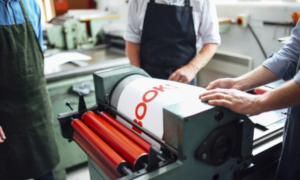Standing out in the competitive business world of today calls for more than simply a clever slogan or well-designed logo. Marketing has developed into a dynamic, multifaceted field in which breaking through the noise depends critically on creativity. Whether your business is a startup trying to get going or an established brand trying to reach more people, your bottom line will be significantly impacted by the right marketing plan.
These five creative marketing concepts create actual, quantifiable outcomes rather than merely catching attention.
1. Host Immersive Brand Experiences
Immersive brand experiences provide a strong means to create an emotional connection and loyalty at a time when consumers want more than just transactions. Pop-up events, interactive installations, or branded workshops where customers may physically interact with your product or service are all effective forms of experiential marketing. A fashion business may, for instance, have a “design your own outfit” day when participants not only test on clothes but also participate in the creative process. Strong word-of-mouth marketing and social media sharing typically follow from this hands-on engagement, therefore naturally growing your brand reach. People are more inclined to support and suggest your brand when they feel as though they fit its narrative.
2. Leverage User-Generated Content
Among your most effective marketing tools are your clients. Encouraging customers to create content around your product or service helps build trust while increasing brand awareness. Unique authenticity seen in user-generated content (UGC) is something traditional advertising cannot mimic. Organizing competitions or campaigns inviting people to post their experiences on social media using a branded hashtag is one efficient approach to leverage UGC. Brands like GoPro have perfected this approach by regularly showcasing customer-submitted videos stressing the features of their products. The secret is to design a strong incentive and a simple means of user engagement. When done correctly, UGC may start a snowball effect, transforming happy consumers into brand ambassadors.
3. Collaborate With Micro-Influencers
Micro-influencers—those with smaller but highly engaged audiences—offer a more focused and successful marketing avenue, even if celebrity sponsorships can be expensive and sometimes lack authenticity. Usually with 1,000 and 50,000 followers, these influencers are seen by their audience as more approachable and reliable. Working with micro-influencers that share your brand values will provide very remarkable outcomes. Higher engagement and conversion rates follow from their endorsements feeling more like personal recommendations than paid promotions. For a new product line, a local fitness brand may, for example, work with regional health influencers. The secret is to establish real connections and give influencers the creative freedom to present your brand in a way their audience would find appealing.
4. Invest in High-Quality Podcast Production
Podcasts are now a great tool for audience engagement and brand narrative. Still, the quality of your podcast will mostly determine its success. Hiring podcast production experts will help your brand be more credible and guarantee that your message appeals to your target market. Done correctly, a podcast lets your business communicate directly to potential customers in a more intimate and consistent format. Talking about relevant industry topics or interviewing notable guests also presents a chance to position your brand as a thought leader. Hiring experts for podcast production guarantees excellent audio quality, flawless editing, and smart content planning—all of which help to keep listeners and improve brand perception. A well-produced podcast doesn’t just inform—it builds a loyal community around your brand.
5. Use Interactive Content to Engage Audiences
Static content is only able to grab attention so far. Interactive content, including polls, calculators, quizzes, and 360-degree product views, encourages customers to interact actively with your brand. This increases lead generation and conversion rates in addition to time spent on your website. A travel agency may, for example, provide a “What’s Your Perfect Vacation?” questionnaire, matching customers with personalized travel packages. This kind of content gives you insight into customer tastes and immediate value to the user as well as enjoyable and sharing quality. Your audience will convert more probably the more engaged they are.
Conclusion
Creative marketing is about being memorable, relevant, and quantifiable—not about being flashy. Try including one or more of these ideas in your marketing plan; you might be amazed at the difference they produce.



































